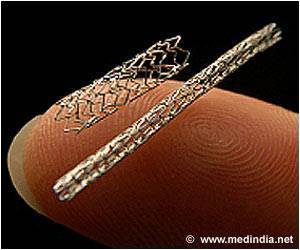Adding CCTA into the first evaluation of low-risk patients arriving at hospital emergency departments with chest pain seem to lower the time patients’ hospitalisation without incurring extra costs.

CCTA combines advanced CT scanning with the use of intravenous contrast material to produce detailed images of blood vessels supplying the heart without the need for cardiac catheterization. Several previous studies, including an immediate predecessor to the current one, have indicated that CCTA can effectively distinguish chest pain patients that do not have coronary artery disease, but those studies all had such limitations as lack of a control group or limited analysis of factors like costs and radiation exposure. The current study – ROMICAT (Rule Out Myocardial Infarction/Ischemia Using Computer Assisted Tomography)-II – was designed to determine whether a CCTA-based evaluation strategy could improve clinical decision making at different hospitals across the country.
From April 2010 to January 2012, patients arriving at the participating hospitals' EDs for evaluation of chest pain who had no history of cardiovascular disease and whose initial tests – ECG and measurement of the biomarker troponin – did not clearly indicate a heart attack were invited to participate in the trial. Those who agreed to participate were randomly assigned to one of two groups. The control group proceeded with standard evaluation, with all diagnostic and treatment decisions being made by hospital physicians not part of the study group. The other group had CCTA as part of their ED evaluation, with the results being shared with attending physicians who, again, made all clinical decisions. Participants who were discharged from the hospital within 24 hours of arrival were called within 72 hours to assess their status, and all participants were called 28 days after hospital discharge and asked whether any return ED visits or rehospitalizations had taken place. Participant responses were verified by checking their medical records. About 1,000 patients completed the study, including the 28-day followup.
The investigators found that participants in the CCTA group had significant reductions in the amount of time from ED arrival until discharge either from the ED or after a hospital stay, with half of the CCTA group being discharged within 8.6 hours but only 10 percent of the control group being released so quickly. The amount of time until a diagnosis of heart disease was either ruled out or confirmed was also shorter for the CCTA group than for the controls, and more patients receiving CCTA were discharged directly from the ED rather than being admitted to an observation unit. The percentage of patients actually diagnosed with heart disease was similar in both groups at around 8 percent, and there were no missed diagnoses in either group.
Analysis of total clinical resources used from arrival to discharge indicated that CCTA participants had more diagnostic procedures than control group members, but the difference was not statistically significant. Neither were there any significant differences between groups in total costs through the 28-day followup in those participants for whom cost information was available. CCTA group participants were exposed to higher cumulative doses of radiation, but the authors note that recent studies have indicated that CCTA can often be successfully performed using lower doses and suggest that future studies test the utility of low-dose CCTA examination.
"It's very important to strive for the greatest efficiency in diagnostic testing, and in this study, additional testing was primarily carried out in patients found to have coronary artery disease," Hoffmann says. "There also were fewer adverse clinical events in those receiving CCTA, although the study group was too small to conclude that CCTA reduced those risks.
Source-Eurekalert
 MEDINDIA
MEDINDIA



 Email
Email










